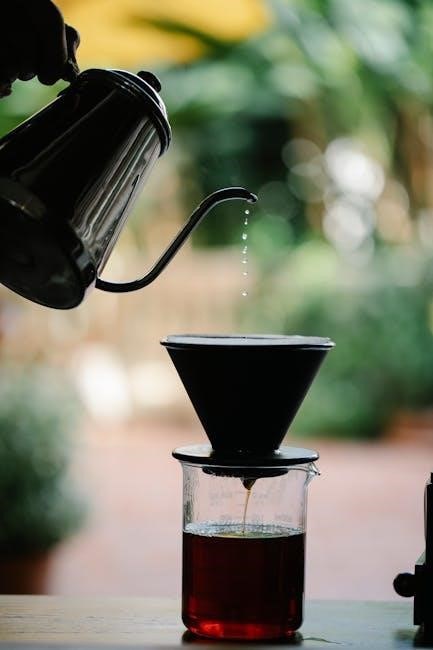
hayward s200 sand filter manual
The Hayward S200 Sand Filter is a high-performance, corrosion-proof filtration system designed for in-ground pools, ensuring crystal-clear water with minimal maintenance and energy efficiency.
Overview of the Hayward S200 Sand Filter
The Hayward S200 Sand Filter is a high-rate sand filtration system designed for in-ground pools, offering efficient water clarification and durability. It features a corrosion-proof, injection-molded tank that ensures long-lasting performance. The filter uses silica sand (0.45-0.55mm) as its media, which effectively removes dirt particles from pool water. With a filtration area of 0.21 square feet and a design flow rate of 20 gallons per minute per square foot, it delivers superior water quality. Its high-capacity design makes it suitable for pools of various sizes, providing reliable and consistent filtration. The system is easy to maintain and operate, making it a popular choice for pool owners seeking a dependable filtration solution.
Key Features and Benefits
The Hayward S200 Sand Filter offers high-rate filtration, ensuring optimal water clarity with minimal maintenance. Its corrosion-proof, heavy-duty tank is built to last, while the silica sand media effectively traps dirt particles. The filter’s design includes a control valve for easy operation, allowing for various modes like filter, backwash, and rinse. Its high flow rate and efficient design make it suitable for pools of all sizes. Additionally, the filter is compatible with both in-ground and above-ground pools, providing versatile installation options. The system’s durability and ease of use make it a cost-effective and reliable choice for maintaining clean pool water throughout the season.

Installation and Setup
Proper installation ensures optimal performance. Prepare the site, assemble components, connect plumbing, and perform final checks as per the manual for a smooth setup process.
Preparing the Site for Installation
Before installing the Hayward S200 Sand Filter, ensure the site is level and clear of debris. Choose a location with proper drainage to prevent water accumulation. Place the filter on a sturdy, flat surface, ideally a concrete pad, for stability. Ensure the area is accessible for future maintenance and meets local building codes. Follow the manual’s guidelines for required clearance and positioning to optimize performance and safety. Proper site preparation ensures efficient operation and longevity of the filter system, aligning with the manufacturer’s recommendations for optimal functionality and user satisfaction.
Assembling the Filter Components
Begin by carefully unpacking and inspecting all components of the Hayward S200 Sand Filter. Follow the manual to identify each part, including the filter tank, control valve, and lateral assembly. Attach the control valve to the filter tank, ensuring all connections are secure. Install the lateral assembly inside the tank, making sure it is properly seated and aligned. Apply a thin layer of silicone sealant to all O-rings for a watertight seal. Hand-tighten all connections to avoid over-tightening, which could damage the components. Refer to the manual for specific torque specifications and assembly diagrams to ensure accurate and safe installation of each part.
Connecting the Plumbing System
Connect the plumbing system to the Hayward S200 Sand Filter by following the manual’s guidelines. Start by attaching the inlet and outlet ports to the pool pump and returns, ensuring proper alignment. Secure all connections with Teflon tape or pipe sealant to prevent leaks. Next, connect the backwash valve to the filter, making sure it is in the correct position. Use the recommended pipe size to maintain optimal flow rates. Tighten all fittings by hand to avoid over-tightening, which could damage the threads. Finally, test the system by running water through it to check for leaks. Ensure all connections are watertight before operating the filter.
Final Installation Checks
After completing the installation, perform a series of final checks to ensure everything is functioning properly. First, inspect all plumbing connections for leaks, tightening any loose fittings. Next, turn on the pump and check the system’s flow rate, ensuring it matches the recommended specifications. Verify that the filter’s control valve is operating smoothly, cycling through all positions without resistance. Check the sand level to ensure it is between the recommended 2/3 full mark. Finally, monitor the pool water clarity and pressure gauge readings to confirm optimal filtration performance. Address any issues immediately to prevent damage and ensure efficient operation. Proper setup guarantees years of reliable service from your Hayward S200 Sand Filter.
Maintenance and Troubleshooting
Regular maintenance ensures optimal performance and longevity of the Hayward S200 Sand Filter. Troubleshooting common issues like sand leaks or clogged laterals helps maintain clean pool water. Always follow the manual’s guidelines for inspections and repairs to prevent damage. Proper upkeep involves checking the control valve, sand levels, and lateral assembly. Addressing problems promptly ensures efficient filtration and extends the filter’s lifespan. By staying proactive, pool owners can enjoy crystal-clear water and reliable operation year-round with minimal effort and cost. Regular maintenance tasks and troubleshooting are essential for maintaining peak performance and ensuring the filter operates effectively. Consistent care prevents unexpected breakdowns and enhances overall system efficiency, providing peace of mind for pool enthusiasts. Effective troubleshooting involves identifying symptoms, diagnosing root causes, and applying the correct solutions as outlined in the manual. This approach minimizes downtime and keeps the pool water safe and clean. Overall, a well-maintained Hayward S200 Sand Filter delivers exceptional results and durability, making it a valuable investment for any pool.
Regular Maintenance Tasks
Regular maintenance is crucial for the optimal performance of the Hayward S200 Sand Filter. Start by ensuring the sand level is between 0.45-0.55mm, as specified in the manual. Backwash the filter periodically to remove trapped debris and maintain clean sand. Inspect the control valve and lateral assembly for signs of wear or damage, replacing them if necessary. Check the O-rings and seals for proper alignment and lubrication to prevent leaks. Clean the filter screen and ensure the drain system is functioning correctly. Monitor water flow rates and pressure levels, addressing any deviations from recommended settings. Finally, refer to the manual for specific guidelines on disassembling and reassembling components safely. Regular upkeep ensures efficient filtration and extends the lifespan of the filter.
Troubleshooting Common Issues
Common issues with the Hayward S200 Sand Filter often stem from improper maintenance or wear and tear. Low water clarity may indicate insufficient or degraded filter sand, while excessive sand loss could point to broken lateral assemblies or a damaged drain plug. High pressure readings suggest clogged sand or debris buildup, requiring immediate backwashing. Leaks around connections or the control valve typically result from worn O-rings or improper sealing. To address these issues, inspect the filter tank, lateral assembly, and control valve for damage. Replace worn parts and ensure all connections are secure. Regular backwashing and sand level checks can prevent many of these problems, ensuring optimal filtration performance and extending the filter’s lifespan.

Replacing Parts and Accessories
Regularly replace worn or damaged components like the lateral assembly, O-rings, and drain plug to maintain optimal performance. Use genuine Hayward parts for reliability and durability.

Replacing the Lateral Assembly
Replacing the lateral assembly in your Hayward S200 sand filter is essential for maintaining proper water flow and filtration efficiency. Start by turning off the pool pump and draining the filter tank. Remove the access dome and carefully lift out the old lateral assembly. Inspect the area for any remaining debris or sand. Install the new lateral assembly by aligning it with the tank’s bottom holes and securing it firmly. Reattach the access dome and ensure all connections are tight. Finally, refill the tank with the recommended amount of silica sand and restart the system. Always use genuine Hayward replacement parts for optimal performance and longevity. Regular replacement prevents clogging and ensures clean pool water.
Replacing the Filter Tank and Components
Replacing the filter tank or its components on your Hayward S200 sand filter requires careful attention to detail to ensure system integrity. Begin by disconnecting the plumbing connections and draining the tank completely; Remove any sand and inspect the tank for damage or corrosion. If replacing the tank, align the new one with the support stand and secure it according to the manufacturer’s instructions. For internal components, such as the filter screen or drain assembly, refer to the manual for specific torque specifications. Always use genuine Hayward parts to maintain warranty and performance. Reassemble the system in reverse order, ensuring all seals are tight to prevent leaks. After replacement, test the system at low pressure to confirm proper function before resuming normal operation. Regular inspections can prevent unexpected failures and extend the lifespan of your filter. Proper installation is crucial for optimal performance and pool water quality. Always follow safety guidelines when handling electrical and plumbing components.

Safety Precautions and Guidelines
Always turn off the pump and release pressure before servicing. Wear protective gear. Avoid over-tightening components. Ensure proper ventilation and follow manual instructions carefully.
Basic Safety Measures
Always turn off the pool pump and release pressure in the system before performing any maintenance. Wear protective eyewear and gloves when handling components. Ensure the filter manual air relief valve is in the open position to prevent pressure buildup. Avoid over-tightening connections, as this may damage threads or gaskets. Keep children and pets away from the filter area during servicing. Never operate the filter without proper ventilation. Follow all instructions in the Hayward S200 Sand Filter manual carefully to ensure safe and effective operation. Regularly inspect components for wear or damage to prevent accidents.
Emergency Procedures
In case of an emergency, immediately turn off the pool pump and release pressure in the system. Isolate power to the filter and ensure the area is clear of personnel. Do not attempt to repair or service the filter until the system is safely depressurized. If a gas leak is suspected, evacuate the area and contact a professional. Never re-enter the area without proper ventilation and safety equipment. Consult the Hayward S200 Sand Filter manual for specific emergency protocols. Addressing issues promptly helps prevent further damage or potential hazards, ensuring a safe and functional filtration system. Professional assistance is recommended for critical situations to avoid risks.
Understanding the Filtration Process
The Hayward S200 Sand Filter uses silica sand to trap dirt particles, improving water clarity. Water flows through the sand, which acts as a natural filter, ensuring clean pool water circulation.
How the Sand Filter Works
The Hayward S200 Sand Filter operates by circulating pool water through a bed of silica sand, which traps dirt and debris. The water enters the filter tank, flows downward through the sand, and exits clean through the control valve. The filter sand, typically No. 20 silica sand, acts as a permanent filtering medium. During backwashing, the flow is reversed, flushing trapped particles out of the system. Proper sand levels (2/3 full) are crucial for optimal performance. This continuous process ensures clean, clear water circulation, making it an efficient and reliable filtration solution for pool maintenance.
Importance of Proper Sand Level
Maintaining the correct sand level in the Hayward S200 Sand Filter is essential for optimal performance. The filter requires 0.45-0.55mm silica sand, specifically No. 20, to effectively trap dirt particles. Proper sand level ensures efficient water filtration and prevents damage to internal components. If the sand level is too low, debris may bypass the filter, reducing its effectiveness. Conversely, excessive sand can impede water flow, leading to increased pressure and potential system damage. Regularly check the sand level, especially after backwashing, and replenish as needed to maintain 2/3 of the tank filled. Proper sand level ensures clean water circulation and extends the filter’s lifespan. Always refer to the manual for specific guidelines. Regular maintenance prevents issues and ensures peak performance. Proper sand level is critical for efficient filtration and system longevity.